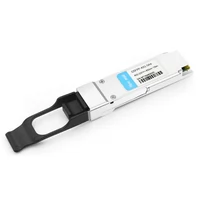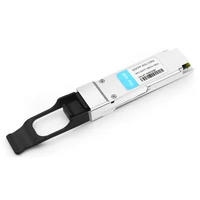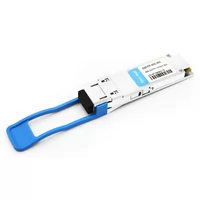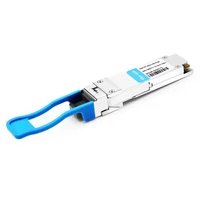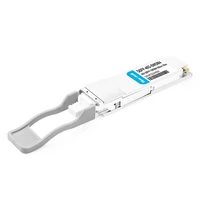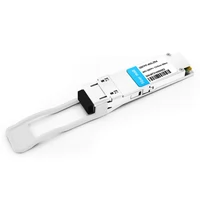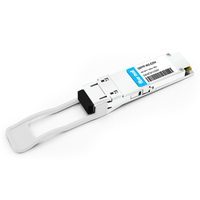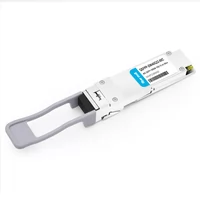In the fast-moving world of business today it is vital to have a network that can be relied upon and one that works quickly. This blog post hopes to give its readers a deep understanding of some of the most current enterprise ethernet switches on the market, which support speeds up to 40GB. Key features, technical specifications, and advantages for medium to large-scale businesses will all be covered. Furthermore, we shall also look into the ways in which these switches may improve performance, scalability, and overall cost-effectiveness within an enterprise setup. If you’re a network administrator or IT professional, whether you own a business or not, this review should give you enough information so that you can make decisions concerning upgrades or deployments for your networks.
Table of Contents
ToggleWhat is a 40Gb Network Switch?
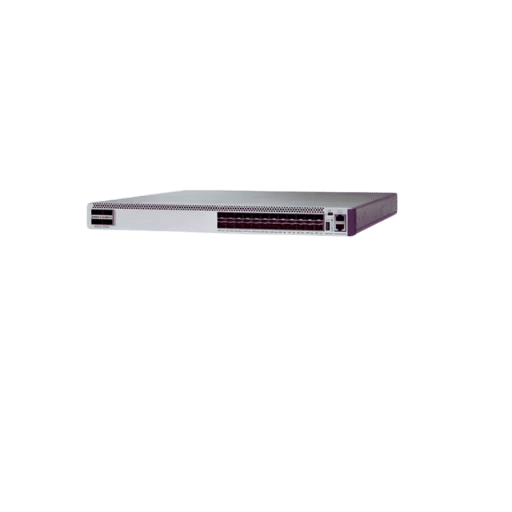
Understanding Network Switches
A 40Gb switch is a device used in computer networking to connect devices together and manage traffic between them. It can transmit data at a rate of forty billion bits per second. These switches operate at the second and third layers of the OSI model (Data Link Layer and Network Layer), performing both routing and switching functions. They enable quick data transfer by linking computers, servers, or other switches within a network so that packets should experience as less latency as possible while being transmitted from one node to another. Usually, such switches possess many ports that connect to different servers.
In what way does it differ from other network switches?
Comparing this with its counterparts, we can say that the most prominent difference lies in their speeds; this transfers information up to four times faster than the – 40 gigabits per second! The latency of this equipment is lower than that of any other switch, which makes it ideal for high-performance applications where every millisecond counts. Another key feature distinguishing these types of switches is that they have more connections due to higher port density options when compared against standards like Gigabit or 10G Ethernet ones because there might be a need for connecting lots of devices simultaneously without using additional equipment modalities for such purposes. Furthermore, enhanced scalability offered by support advanced protocols also sets apart these devices thus enabling better performance within large organizations with numerous workstations or departments connected via LANs.
How to Select the Right 40Gb Ethernet Switch?
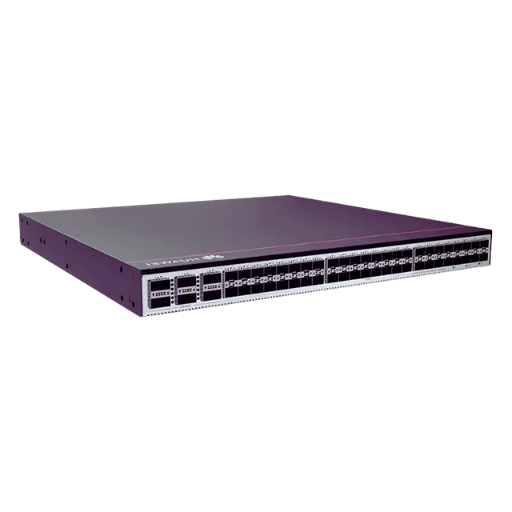
Considering Ports and Bandwidth
While choosing a 40Gb Ethernet switch, it is important to evaluate how many ports are needed and what bandwidths will be required by your network. Ensure enough port density so that all connected devices can be accommodated, and take into account any potential future expansions. The switch should support an aggregate bandwidth that can handle peak traffic loads without creating bottlenecks. Additionally, you should look at port configuration on the switch, such as support for different types of ports like SFP+ or QSFP+, which would need to be compatible with existing hardware in your possession. These factors contribute greatly towards keeping efficiency alive within scaling networks.
Layer 2 vs Layer 3 Switches Comparison
Layer 2 switches operate on MAC addresses at the data link layer and do MAC address learning as well as forwarding, among other things. They are responsible for intra-network communication, which means they deliver packets within the same LAN (Local Area Network). Conversely, layer three switches work at the network layer of the OSI Model; these devices have both switching functions plus routing capabilities, too. In other words, inter-network traffic management is better done by them while performing IP address-based routing, which becomes necessary when dealing with larger networks having maximum data transfer rates equal to or more than forty gigabits per second (40Gbps). Therefore, one needs to choose wisely between these two options so that their setup achieves efficient network segmentation, traffic control, and scalability, especially where required.
Managed Switches versus Unmanaged Switches
Managed switches provide users with a wide range of controls, including VLAN configuration, QoS settings, and SNMP monitoring, among others ; therefore, they should be considered when dealing with a complex network that needs fine-tuning for optimal performance. On the other hand, unmanaged switches offer basic connectivity without any further settings being possible. This makes them appropriate for environments where simplicity is key; hence, they can just plug and play. One should decide which route to take based on their needs in terms of network control, scalability and oversight over performance.
Benefits of a 40Gb Ethernet Switch
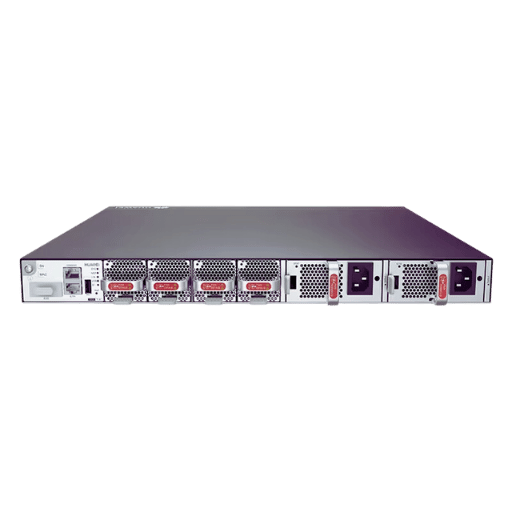
Greater speeds for data transfer
The most significant advantage to using a 40Gb Ethernet switch is that it allows for much faster data transfer speeds than previous models. This means that high-bandwidth applications can run on the same network as other things without slowing down their connections too much, which could be helpful when dealing with large amounts of scientific computation or live video streaming. More than this, you could back up your files at light’s speed thanks to its four times bigger throughput compared with the older generations like 10gbps switches, and such quick backups would make transferring big files take minutes rather than hours – so not only does everything work better together, but it also works faster apart.
Better Network Performance
40GbE switches improve network performance by removing bottlenecks and maintaining fast connection speeds across all devices. In these setups, tasks that require a lot of computational power or involve moving lots of data quickly from one place to another benefit greatly from more bandwidth being available throughout the system, thus ensuring that reliability will increase since there is lower latency combined with higher throughput resulting in stronger backbone operation stability altogether.
Scalable Networks for Enterprise Growth
It may seem obvious, but another great thing about having enterprise-level equipment like 40 Gbps Ethernet switches around is scalability – they allow you to grow your setup without having to change everything every time new needs arise! These types of switches can operate in very dense environments due to having more ports on them while still giving out good amounts of bandwidth per port, making them ideal candidates for enterprise network switch setups that have higher density requirements. This means if there were ever demands placed upon an organization where data usage skyrocketed, then this could easily be dealt with by simply expanding its current infrastructure further using some more modules as necessary, thus ensuring businesses can always keep ahead no matter what.
How do I install a 40Gb Ethernet switch?
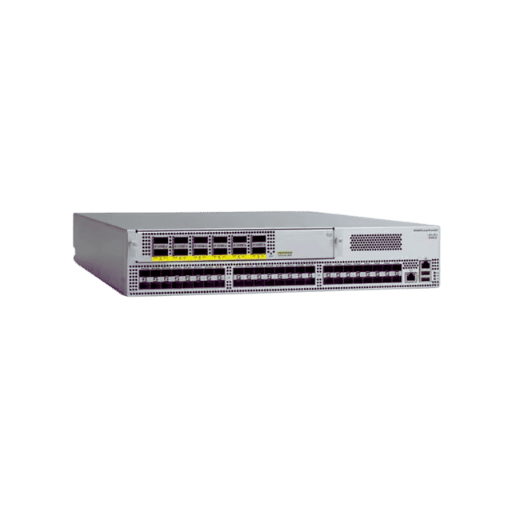
Ports and Cables of Attachment
- Identify Ports – The 40Gb Ethernet ports are found on the switch and the connected devices.
- Choose Suitable Cables – Use QSFP+ cables or Direct Attach Cables (DACs) that support 40Gb Ethernet.
- Inserting Cables – Insert each cable firmly into its corresponding port until you hear a click sound which means it’s secure. Consider using DAC cables for a maximum data transfer rate of 40 gbps.
- Check Connections — Ensure all cables are well seated, some visual indicators on the switch will show if there is an active connection or not.
- Switch On Power – After connecting all cables turn on power for switches to start working with 10gbe ports for best performance.
- Validate network configuration – Go to the switch management interface and verify network settings for optimum performance.
Setting up the switch
- Use the management interface: Access the web browser or SSH client to log in to the management interface of a switch through its IP address.
- Creating VLANs: Separate network traffic by creating and assigning VLANs where necessary.
- Enabling Spanning Tree Protocol (STP): In enterprise network switches 40 Gbps environments or more, configure STP to avoid network loops and provide redundancy.
- Implementing Quality of Service (QoS): Prioritize important network traffic with QoS policies.
- Configuring port settings: Optimize performance by adjusting port speed, duplex mode, and link aggregation settings; for better throughput use 10gbe connections.
- Updating firmware: Ensure that the switch firmware is updated for security and performance improvements.
- Save changes made and apply them: Verify and save all changes so they take effect now.
Connectivity Issues Troubleshooting
- Physical Connections Check: Ensure all cables are connected properly and tightly.
- LED Indicators Verification: Connection problems can be identified by looking at LED status lights on the switch.
- Network Cables Testing: You can check for faulty or damaged cables with a cable tester.
- Port Configuration Inspection: Ports should be correctly configured in the management interface.
- Switch Restart: Power cycle the switch to fix temporary issues.
- Network Settings Examination: Verify IP address, subnet mask, and gateway settings.
- Firmware Update: Ensure that firmware is up-to-date, as it may fix known bugs and improve stability.
- Logs Consultation: System logs should be reviewed for error messages and diagnostic information.
- Problem Isolation: Disconnect devices one by one and connect them back to find out where the problem lies.
- Resetting to Factory Defaults: If everything else fails, reset the switch to factory settings and reconfigure.
Frequent Uses for a 40Gb Network Switch
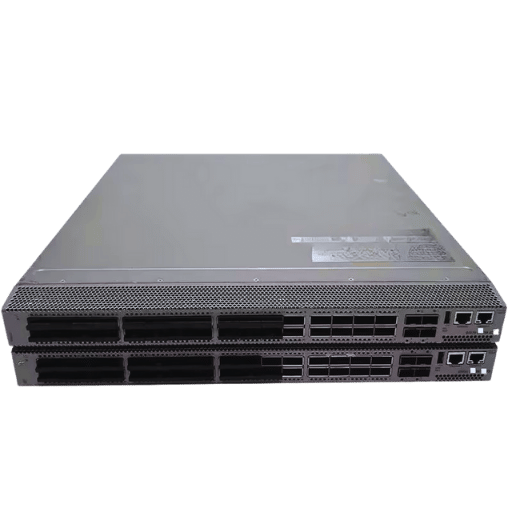
Use in Data Centers
In data centers, 40Gb network switches are indispensable because they provide fast connections with low latency that can handle the huge amounts of traffic and resource-intensive applications typically found there. They allow for scalable architecture by connecting many servers and storage systems together so that information flows efficiently through them all while keeping the network reliable. Moreover, such switches support virtualization as well as cloud computing by delivering enough bandwidth and performance to handle heavy workloads without sacrificing speed or stability. More so, their advanced features like Quality of Service (QoS) and link aggregation help optimize data traffic management, leading to better overall network performance improvements.
Advantages of Computer Networking
Among the many benefits that computer networking can reap from using 40Gb network switches include a maximum data transfer rate of 40 Gbps. Firstly, these devices greatly increase the speed at which data is transferred across a network, thereby making communication between different devices faster and improving efficiency throughout an entire system. This is especially useful for environments dealing with large volumes of information, such as big data analytics platforms, video streaming sites, or real-time applications where seconds count. Secondly, scalability is enhanced since networks can grow organically by adding more devices without impacting performance negatively. Thirdly, QoS, along with other advanced traffic management capabilities built into these types of switches, ensures reduced latency plus minimized packet loss, hence guaranteeing reliable, stable network performance always. Finally, long-term cost savings are realized due to increased resource utilization efficiency coupled with lower requirements for frequent upgrades brought about by deploying them
What are the expenses with a 40GB Ethernet switch?
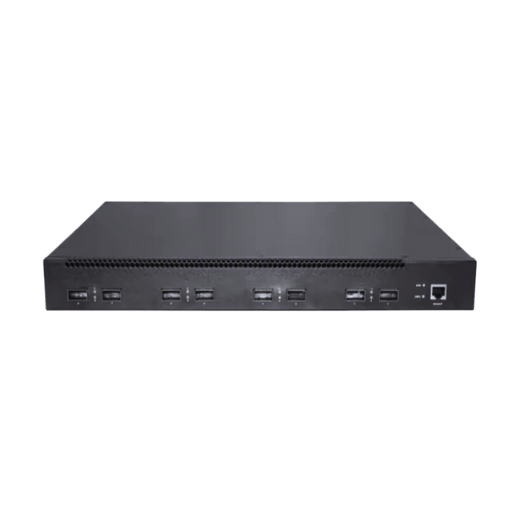
Comparing Different Models Based on Prices
The prices of 40GB Ethernet switches vary from one manufacturer or model to another, as well as the features they have. The basic functionality for small to medium-sized networks starts at around $2,000 with low-end models, while higher-end models support up to 40gbps maximum data transfer rates. Midrange models, which cost between $5,000-$8,000, usually offer more advanced traffic management capabilities and come with higher port counts than their counterparts in other categories. Designed for enterprise environments that have large network needs, high-end switches can go beyond $10,000 but provide top-level performance plus advanced security functions alongside scalability options that are not available anywhere else. Additional considerations like warranty terms or support packages might cause significant differences between what vendors charge for their products due to technological integrations being specific among different suppliers.
Understanding ROI (Return On Investment)
Evaluating returns from these types of devices requires looking at both tangible and intangible benefits associated with them. Tangible benefits include direct savings realized through better resource utilization, leading to fewer upgrades needed frequently, while intangibles may refer to things like improved network reliability. Even if this does not measure out clearly in financial terms – such situations can still be considered when calculating ROI for 40 GB switches, which play a significant role in stability within an organization’s systems. By comparing initial investments against long-term savings accompanied by performance enhancements, it becomes easier to arrive at conclusions regarding return on investment, especially where the maximum data transfer environment is concerned, since they help create reliable scalable structures, thereby increasing efficiency levels throughout the company.
Reference Sources
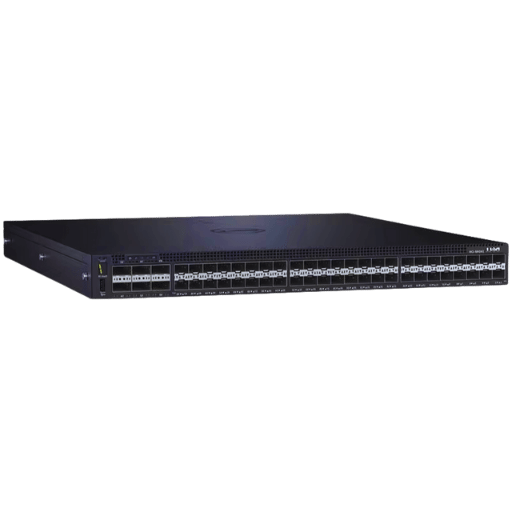
Computer network
Frequently Asked Questions (FAQs)
Q: What are enterprise network switches with a 40 Gbps data transfer rate?
A: Enterprise network switches of 40 gbps transfer rate are switches that can pass very large information loads at very high speeds, typically used in data centers and big business networks.
Q: How does a gigabit-managed network switch differ from an unmanaged one?
A: A gigabit managed network switch provides advanced functions like VLANs, QoS, and SNMP monitoring, which allow for more control and configuration, while an unmanaged switch is just plug-and-play with no options to customize it.
Q: What benefits do 48-port gigabit ethernet switches offer for enterprise networks?
A: In a nutshell, 48-port gigabit ethernet switches have many ports where you can connect many devices, making them suitable for large-scale enterprise networks whose availability and reliability matter a lot.
Q: How do computer networking switches with a 40 Gbps data transfer rate improve performance?
A: Computer networking switches having 40 gbps data transfer rate enhance performance through latency reduction as well as providing high speed connectivity required by data-intensive applications.
Q: Why should enterprises use PoE switches?
A: They deliver both power and data over a single cable, so there’s less wiring and fewer power supplies needed – which makes the network setup faster and cheaper.
Q: What do SFP and QSFP modules do in 40Gbe Ethernet switches?
A: These transceivers provide flexible high-speed connections between fiber optic cables and Ethernet equipment, supporting faster data transfers across longer distances than copper cables allow for.
Q: How does network management improve with managed switches like Cisco or Mikrotik?
A: Administrators can monitor all traffic on their networks from one place using features like port mirroring or VLAN tagging, which let them see exactly what each device is doing at any given time.
Q: What uplink ports are found on most 40 Gbps ethernet switches?
A: Uplink ports like 2x QSFP or 4x SFP allow high-speed connections between other switches or servers within an infrastructure.
Q: So what’s the big deal about 10GBASE-T these days?
A: Basically, it just means you can get really fast internet without having to dig up your yard for fiber optics; this technology lets us use copper cables instead, which are cheaper and easier to work with but still provide excellent performance levels!
Q: Can I put different kinds of ports – like 40GB qsfp and gigabit ethernet – in one managed switch?
A: Yes! That’s one of the coolest things about modern managed switches; they’re super flexible so you can mix and match different types depending on what devices need to connect together
Related Products:
-
 H3C QSFP-40G-SR4-MM850 Compatible 40G QSFP+ SR4 850nm 150m MTP/MPO MMF DDM Transceiver Module
$25.00
H3C QSFP-40G-SR4-MM850 Compatible 40G QSFP+ SR4 850nm 150m MTP/MPO MMF DDM Transceiver Module
$25.00
-
 40G QSFP+ CSR4 850nm 300m MTP/MPO MMF DDM Optical Transceiver Module
$30.00
40G QSFP+ CSR4 850nm 300m MTP/MPO MMF DDM Optical Transceiver Module
$30.00
-
 QSFPP-40G-IR4 40G QSFP+ IR4 1310nm (CWDM4) 2km LC SMF DDM Transceiver Module
$129.00
QSFPP-40G-IR4 40G QSFP+ IR4 1310nm (CWDM4) 2km LC SMF DDM Transceiver Module
$129.00
-
 QSFPP-40G-LR4-PSM 40G QSFP+ LR4 PSM 1310nm 10km MTP/MPO SMF DDM Transceiver Module
$149.00
QSFPP-40G-LR4-PSM 40G QSFP+ LR4 PSM 1310nm 10km MTP/MPO SMF DDM Transceiver Module
$149.00
-
 QSFP-40G-SWDM4 40G QSFP+ SWDM4 850nm-940nm 350m LC MMF DDM Optical Transceiver
$249.00
QSFP-40G-SWDM4 40G QSFP+ SWDM4 850nm-940nm 350m LC MMF DDM Optical Transceiver
$249.00
-
 QSFPP-40G-ZR4 40G QSFP+ ZR4 LWDM4 80km LC SMF DDM Optical Transceiver Module
$1200.00
QSFPP-40G-ZR4 40G QSFP+ ZR4 LWDM4 80km LC SMF DDM Optical Transceiver Module
$1200.00
-
 QSFPP-40G-EZR4 40G QSFP+ EZR4 DWDM4 100km LC SMF DDM Optical Transceiver Module
$1600.00
QSFPP-40G-EZR4 40G QSFP+ EZR4 DWDM4 100km LC SMF DDM Optical Transceiver Module
$1600.00
-
 QSFPP-DW40G22-80C 40G QSFP+ DWDM C22 100GHz ZR 80km 1559.79nm LC SMF DDM Transceiver Module
$1650.00
QSFPP-DW40G22-80C 40G QSFP+ DWDM C22 100GHz ZR 80km 1559.79nm LC SMF DDM Transceiver Module
$1650.00

